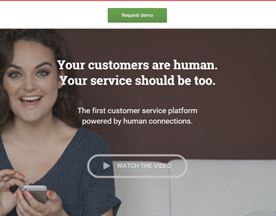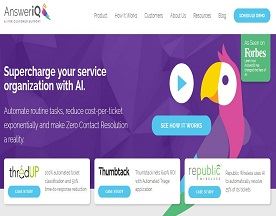What is a chief customer officer ? A Chief Customer Officer (CCO) leads a company’s customer-centric strategies, ensuring top-notch service and satisfaction. #CCORole
A Chief Customer Officer (CCO) is a relatively new position in the C-suite that is gaining popularity across industries. The CCO is responsible for overseeing all aspects of the customer experience and advocating for the customer within the organization. This includes developing and implementing customer-centric strategies, measuring customer satisfaction, and ensuring that all departments are aligned to deliver a seamless and positive customer experience.

The role of the CCO has evolved over time, from a focus on customer service to a more strategic role that encompasses the entire customer journey. As customers become more empowered and have higher expectations, companies are recognizing the importance of having a dedicated executive responsible for the customer experience. The CCO is often seen as a key driver of growth and profitability, as a positive customer experience can lead to increased loyalty, repeat business, and referrals.
As the importance of the customer experience continues to grow, the role of the CCO is becoming increasingly critical to the success of organizations. Companies that prioritize the customer experience and invest in a CCO can gain a competitive advantage in the marketplace. However, there are also challenges associated with the role, such as navigating organizational silos and ensuring that all departments are aligned to deliver a seamless customer experience.
Key Takeaways
- The CCO is a new position in the C-suite that is responsible for overseeing all aspects of the customer experience and advocating for the customer within the organization.
- The role of the CCO has evolved from a focus on customer service to a more strategic role that encompasses the entire customer journey.
- Companies that prioritize the customer experience and invest in a CCO can gain a competitive advantage in the marketplace.
Role Definition and Evolution
The role of Chief Customer Officer (CCO) has evolved over the years, and it continues to evolve as customer expectations change. This section will explore the historical context of the CCO role, compare it with related roles, and outline modern CCO responsibilities.
Historical Context
The CCO role emerged in the late 1990s in response to the growing recognition that customer satisfaction was crucial to business success. The role was initially focused on improving customer service and support, but it has since evolved to encompass a broader range of responsibilities.
Comparison with Related Roles
The CCO role is often compared to other customer-focused roles in the C-suite, such as the Chief Client Officer (CCO) and Chief Experience Officer (CXO). While there is some overlap between these roles, the CCO is typically responsible for the overall customer experience across all touchpoints, while the CCO and CXO may have more specific areas of focus.
Modern CCO Responsibilities
Today’s CCO is responsible for ensuring that the customer is at the center of the organization’s strategy and operations. This includes:
- Developing and implementing a customer-centric culture throughout the organization
- Defining and measuring customer satisfaction and loyalty metrics
- Identifying and addressing customer pain points and opportunities for improvement
- Collaborating with other departments to ensure a consistent customer experience
- Communicating customer insights and feedback to the rest of the organization
- Staying up-to-date with emerging customer trends and technologies
According to a recent report by Gartner, “The CCO role is becoming increasingly critical to the success of organizations that want to drive growth and customer loyalty.”
Strategic Importance
The role of a Chief Customer Officer (CCO) has become increasingly important in today’s business landscape, with the focus shifting towards customer-centric strategies. A CCO is responsible for ensuring that the company’s customers are at the forefront of all decision-making processes. This section will examine the strategic importance of having a CCO in an organization, with a focus on their contribution to profitability, impact on customer loyalty and retention, and role in competitive advantage.
Contribution to Profitability
A CCO can have a significant impact on a company’s profitability by ensuring that the customer is at the center of all business decisions. This means that the company’s products and services are tailored to meet the needs and expectations of its customers. By doing so, a CCO can help improve customer satisfaction, which can lead to increased sales, higher customer lifetime value, and ultimately, higher profits.
According to a study by Harvard Business Review, companies that prioritize customer experience have higher revenue growth, higher return on investment (ROI), and higher shareholder returns than companies that do not. This highlights the importance of having a CCO who can help drive customer-centric strategies and contribute to the company’s profitability.
Impact on Customer Loyalty and Retention
A CCO is responsible for ensuring that the company’s customers are satisfied with the products and services they receive. This means that the CCO must work closely with other departments to ensure that the customer’s needs are met at every touchpoint. By doing so, a CCO can help improve customer loyalty and retention.
A loyal customer is more likely to make repeat purchases, recommend the company to others, and be less price-sensitive. This can help improve the company’s revenue growth and profitability in the long run. A CCO can help improve customer loyalty and retention by implementing customer-centric strategies, such as personalized marketing campaigns, customer feedback programs, and customer service training.
Role in Competitive Advantage
A CCO can play a critical role in helping a company gain a competitive advantage in its industry. By focusing on the customer and ensuring that their needs are met, a company can differentiate itself from its competitors. This can help improve customer loyalty and retention, which can lead to increased market share and profitability.
According to a study by Deloitte, companies that prioritize customer experience are more likely to have a competitive advantage in their industry. This highlights the importance of having a CCO who can help drive customer-centric strategies and contribute to the company’s competitive advantage.
In conclusion, a CCO can have a significant impact on a company’s profitability, customer loyalty and retention, and competitive advantage. By ensuring that the customer is at the center of all business decisions, a CCO can help improve the company’s bottom line and position it for long-term success.
Here is a link to an external resource with high authority on the topic of the business case for customer experience.
Organizational Impact

The role of a Chief Customer Officer (CCO) can have a significant impact on an organization, from its culture to its bottom line. In this section, we will explore the organizational impact of having a CCO and how it can benefit a company.
Influence on Company Culture
A CCO can play a crucial role in shaping a company’s culture by placing the customer at the center of all decision-making processes. This customer-centric approach can lead to a more empathetic and responsive organizational culture that values customer feedback and prioritizes customer satisfaction. By emphasizing the importance of customer experience, a CCO can help create a culture that is more focused on delivering value to customers and building long-term relationships.
Cross-Functional Collaboration
Another key area where a CCO can have an impact is in promoting cross-functional collaboration. By working closely with other departments, such as marketing, sales, and product development, a CCO can help ensure that everyone is aligned around a common goal of delivering an exceptional customer experience. This collaboration can help break down silos and improve communication, leading to more efficient and effective processes.
Alignment with Business Units
Finally, a CCO can help ensure that the organization’s various business units are aligned around a shared vision for customer experience. By working closely with business unit leaders, a CCO can help ensure that everyone is on the same page when it comes to customer needs and expectations. This alignment can lead to a more cohesive and effective organization that is better equipped to meet the needs of its customers.
Overall, the organizational impact of having a CCO can be significant, from improving company culture to promoting cross-functional collaboration and aligning business units around a shared vision. By placing the customer at the center of all decision-making processes, a CCO can help ensure that the organization is focused on delivering value to its customers and building long-term relationships. For more information on the role of a CCO, check out this Forbes article.
Customer Advocacy

As a Chief Customer Officer, one of the primary responsibilities is to ensure that the company has a customer-centric culture. This means that the entire organization is focused on providing the best possible experience for the customer.
Building a Customer-Centric Culture
To build a customer-centric culture, the Chief Customer Officer needs to work closely with other departments, including customer success, marketing, sales, and product development. The goal is to ensure that every department is aligned with the company’s customer-focused mission and vision.
This can be achieved by establishing clear guidelines and processes that put the customer at the center of everything the company does. For example, the Chief Customer Officer can work with the product development team to ensure that customer feedback is incorporated into the product roadmap.
Voice of the Customer
The Chief Customer Officer is also responsible for being the voice of the customer within the company. This means that they need to be able to effectively communicate customer feedback and insights to other departments.
To do this, the Chief Customer Officer needs to have a deep understanding of the customer and their needs. They can gather this information through customer feedback surveys, social media listening, and other channels.
Customer Feedback and Insights
Gathering customer feedback and insights is critical to the success of any customer-centric organization. The Chief Customer Officer needs to be able to analyze this information and turn it into actionable insights that can be used to improve the customer experience.
One way to do this is by using customer feedback software that can help track and analyze customer feedback. This software can help identify trends and patterns in customer feedback, which can be used to make data-driven decisions that improve the customer experience.
Overall, the Chief Customer Officer plays a critical role in ensuring that the company is focused on the customer. By building a customer-centric culture, being the voice of the customer, and using customer feedback and insights to drive decision making, the Chief Customer Officer can help the company achieve its goals while providing an exceptional customer experience.
Here is an article from Forbes that provides more information on the role of a Chief Customer Officer.
Metrics and Measurement

As a metrics-driven role, the Chief Customer Officer (CCO) must be able to measure and analyze various key performance indicators (KPIs) to ensure customer satisfaction and retention. The CCO must be able to provide a clear picture of the customer experience and how it impacts the company’s bottom line.
Key Performance Indicators
The CCO must identify and track KPIs that are relevant to the company’s business model and goals. These may include metrics such as churn rate, customer satisfaction, and customer health score. By analyzing these metrics, the CCO can identify areas for improvement and take action to improve the customer experience.
One important KPI that the CCO should focus on is the customer effort score (CES). This metric measures the ease with which customers are able to interact with the company and obtain what they need. By reducing customer effort, the CCO can improve customer satisfaction and retention.
Customer Health and Satisfaction Metrics
The CCO must also measure customer health and satisfaction metrics to ensure that customers are receiving the best possible experience. These metrics may include the customer health score, which measures the overall health of the customer relationship, and the Net Promoter Score (NPS), which measures customer loyalty.
To measure customer satisfaction, the CCO may use metrics such as the customer satisfaction score (CSAT) and the customer effort score (CES). By tracking these metrics over time, the CCO can identify trends and take action to improve the customer experience.
Revenue and Retention Metrics
The CCO must also track revenue and retention metrics to ensure that the company is meeting its business goals. These metrics may include gross revenue retention (GRR) and net revenue retention (NRR), which measure the amount of revenue retained from existing customers.
To improve revenue and retention, the CCO may focus on improving customer satisfaction and reducing churn. By analyzing these metrics, the CCO can identify areas for improvement and take action to improve the customer experience.
Overall, the CCO must be able to measure and analyze a variety of metrics to ensure that the company is providing the best possible customer experience. By focusing on KPIs such as customer satisfaction, customer health, and revenue retention, the CCO can drive business growth and improve customer loyalty.
To learn more about customer metrics and measurement, check out this resource from Forbes.
Challenges and Solutions

Addressing Customer Churn
One of the biggest challenges that Chief Customer Officers (CCOs) face is customer churn. It can be difficult to keep customers engaged and loyal to a brand. This can be due to a variety of reasons, such as poor customer service, lack of product innovation, or failure to address customer feedback.
To address customer churn, CCOs need to focus on improving customer experience and satisfaction. One effective solution is to gather customer feedback regularly and use it to make improvements. This can be done through surveys, focus groups, or social media listening.
Another solution is to implement a customer loyalty program. This can incentivize customers to stay with a brand by offering rewards, discounts, or exclusive content. By showing customers that their loyalty is valued, CCOs can reduce churn and increase customer retention.
Adapting to Market Changes
Market changes can be a major challenge for CCOs. It’s important to stay up-to-date with trends and shifts in customer behavior. This can be difficult, as market changes can be sudden and unpredictable.
To adapt to market changes, CCOs need to be agile and flexible. They need to be able to pivot quickly and make changes to their customer strategy as needed. This can involve conducting market research, analyzing customer data, and keeping up with industry news and trends.
Another solution is to foster a culture of innovation within the organization. This can involve encouraging employees to think creatively and come up with new ideas for products, services, or customer experiences.
Implementing Effective Strategies
Implementing effective customer strategies can be a challenge for CCOs. It’s important to have a clear plan in place and to ensure that all departments are aligned with the customer strategy.
To implement effective strategies, CCOs need to work closely with other departments, such as marketing, sales, and product development. They need to ensure that everyone is working towards the same goals and that the customer is at the center of all decisions.
Another solution is to use data and analytics to inform customer strategy. By analyzing customer behavior and preferences, CCOs can make data-driven decisions and ensure that their strategies are effective and efficient.
According to Forbes, the role of the CCO is becoming increasingly important in today’s business landscape. By addressing challenges such as customer churn, adapting to market changes, and implementing effective strategies, CCOs can help drive growth and success for their organizations.
Technology and Innovation

The role of the Chief Customer Officer (CCO) has evolved significantly in recent years, thanks to the rapid pace of technological advancement and innovation. In today’s digital age, technology plays a critical role in shaping customer experiences, and the CCO must be well-versed in the latest tools and techniques to stay ahead of the curve.
Digital Transformation
The CCO must be able to leverage technology to drive digital transformation within the organization. This may involve implementing new systems and processes to streamline customer interactions, such as chatbots and other AI-powered tools that can provide personalized support and assistance. By embracing digital transformation, the CCO can help the organization to become more agile and responsive to changing customer needs.
Customer Experience Management Tools
To effectively manage the customer experience, the CCO must have access to the right tools and technologies. This may include customer relationship management (CRM) software, which can help to track customer interactions and provide insights into their behavior and preferences. Other tools, such as customer feedback platforms and sentiment analysis tools, can help the CCO to gain a deeper understanding of customer needs and preferences.
Automation and Efficiency
Automation is a key driver of efficiency and productivity, and the CCO must be able to leverage automation technologies to streamline customer interactions and improve the overall customer experience. This may involve automating routine tasks, such as responding to customer inquiries or processing orders, freeing up staff to focus on more complex issues. By embracing automation, the CCO can help to reduce costs and improve the overall efficiency of the organization.
In conclusion, technology and innovation play a critical role in shaping the role of the Chief Customer Officer. By staying up-to-date with the latest tools and techniques, the CCO can drive digital transformation, manage the customer experience, and improve efficiency and productivity. For more information on the latest trends and best practices in this space, check out this article.
Career Path and Development

Educational Background
The path to becoming a Chief Customer Officer (CCO) is not always straightforward. While there is no specific educational requirement for this role, a strong educational background can be beneficial. Many CCOs have a bachelor’s or master’s degree in business, marketing, or a related field. Some also have a background in psychology or sociology, as understanding consumer behavior is a key aspect of the role.
Professional Growth
CCOs typically have several years of experience in customer service, marketing, or sales before moving into this role. They may have worked their way up through the ranks of a company, or they may have held leadership positions at other organizations. Regardless of their background, CCOs must have a deep understanding of customer needs and preferences, as well as the ability to develop and execute strategies to meet those needs.
Leadership and Performance
CCOs must be strong leaders who can inspire and motivate their teams. They must also be results-driven, with a focus on achieving measurable outcomes that benefit both the customer and the company. To be successful in this role, CCOs must have excellent communication skills, as they will need to collaborate with other executives and stakeholders across the organization.
One resource that can be helpful for those interested in pursuing a career as a CCO is the Chief Customer Officer Council. This organization provides networking opportunities, educational resources, and other support for CCOs and other customer-centric executives.
Overall, becoming a CCO requires a combination of education, experience, and leadership skills. Those who are passionate about putting the customer at the center of their organization’s strategy and operations may find this role to be a rewarding and fulfilling career path.
Frequently Asked Questions

What are the primary responsibilities of a Chief Customer Officer?
The primary responsibilities of a Chief Customer Officer (CCO) are to ensure that the organization is focused on delivering an exceptional customer experience. This includes developing and implementing customer-centric strategies, improving customer satisfaction, and building a customer-centric culture across the organization. The CCO is also responsible for gathering and analyzing customer feedback and using this information to drive improvements in products, services, and processes.
How does a Chief Customer Officer’s role differ from that of a Chief Revenue Officer?
While the Chief Revenue Officer (CRO) is focused on driving revenue growth, the CCO’s primary focus is on delivering an exceptional customer experience. The CCO is responsible for building long-term customer relationships and ensuring that customers are satisfied with the organization’s products and services. The CRO, on the other hand, is focused on generating revenue through sales and marketing activities.
What is the typical career path to become a Chief Customer Officer?
The career path to becoming a CCO can vary, but typically involves gaining experience in customer-facing roles such as sales, marketing, or customer service. Many CCOs also have experience in general management or operations. According to a report by Korn Ferry, a leading global organizational consulting firm, “CCOs come from a variety of backgrounds, but most have a deep understanding of customer needs and preferences, as well as experience in managing customer-facing teams.”
In what ways do the duties of a Chief Operating Officer and Chief Customer Officer overlap and differ?
The Chief Operating Officer (COO) and CCO both play important roles in ensuring that the organization is focused on delivering an exceptional customer experience. However, the COO’s primary focus is on ensuring that the organization’s operations are running smoothly and efficiently, while the CCO’s primary focus is on building long-term customer relationships and driving improvements in the customer experience.
How does the role of a Chief Customer Officer integrate within an organization’s structure?
The role of the CCO can vary depending on the organization’s structure. In some organizations, the CCO reports directly to the CEO, while in others, the CCO may report to the Chief Marketing Officer or Chief Operating Officer. According to a report by McKinsey & Company, “the most effective CCOs are those who are integrated into the organization’s leadership team and have a seat at the table when key decisions are being made.”
What skills and qualifications are essential for a successful Chief Customer Officer?
According to a report by Forrester, a leading market research firm, “successful CCOs have a deep understanding of customer needs and preferences, as well as experience in managing customer-facing teams.” Other essential skills and qualifications include strong leadership and communication skills, the ability to analyze and interpret customer data, and a track record of driving improvements in the customer experience. A CCO should also be able to collaborate effectively with other members of the organization’s leadership team to drive customer-centric strategies.
One resource with high authority on this topic is the Chief Customer Officer Council, which provides resources and networking opportunities for CCOs and other customer-focused executives.














